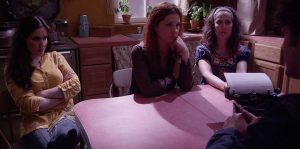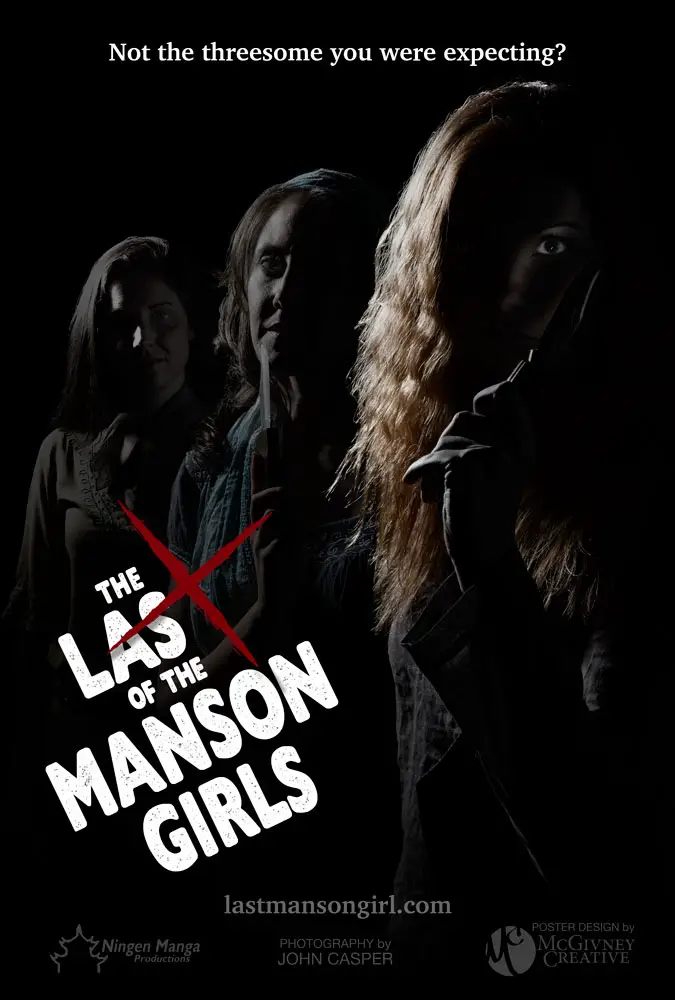
There’s a trend of subverting historical fact regarding the Manson family, especially right now. The Haunting of Sharon Tate, Once Upon A Time…In Hollywood and other films that I have yet to see run the truth through a psychedelic spin cycle. In The Last Of The Manson Girls, this device is no exception. It’s even stated in an opening title card that the film is revisionist history.
The 50th anniversary of the infamous Manson murders is fast approaching. August 9, 1969, is known to those that were there as the death knell of the ’60s. Hippie culture was fading into the past as people no longer trusted in what at first seemed to be a very harmless subsect of people. Charles Manson and his followers threw a brick through the window of that assumption and turned the world, especially Hollywood, on its head.
“…a letter from Charles Manson that has a code in it which tells Paul to ‘Call Squeaky.'”
Paul Krassner, a comedian and journalist who toured around with Ken Kesey’s Merry Pranksters and was a founding member of the Yippie movement, was acutely aware of the effects that the Manson murders had on the subculture he helped create. In The Last Of The Manson Girls, we first meet Krassner (Elliott Kashner) onstage talking about this very phenomenon. Nixon had just been elected president, Manson was on trial, the Vietnam War was still trudging ever onward. Krassner is telling the audience a story of how he met three of the “Manson Girls” in Los Angeles. Lyn “Squeaky” Frohm (Jen Bevan), Sandra Good (Cindy Marie Martin), and Brenda McCann (Sarah Taurchini) live in an apartment together, dealing with the dissolution of their family and their warped version of the American dream.
Krassner went to meet with the girls after meeting Mae Brussell (Robin Reck), an avid conspiracy theorist and host of the radio show Dialogue: Conspiracy. She believed that Manson was not responsible for the murders. She believed that Tex Watson was in cahoots with a CIA spook named N. Dight, and that the murders were a way to get America to distrust the counter culture and therefore bring someone like Nixon into power. In some ways, this is a patently ridiculous assumption, but in others, it totally could be true considering how insane this world is. So Krassner finds a letter from Charles Manson that has a code in it which tells Paul to “Call Squeaky”. The rest of the film focuses on Krassner’s meeting with the girls in their apartment, which did actually happen, but how are we to know exactly what happened that day?
“…there are still what-ifs 50 years later…”
The Last Of The Manson Girls is an incredibly smart look into yet another facet of one of the most infamous historical events in American history. It begs the question that what if we honestly have no idea of what really happened with “The Family”? What if “Bug” (what the girls refer to prosecutor Vincent Bugliosi as) really did have it out for Manson and twisted the narrative? Or what if Manson was right and we’re still waiting for a huge cultural war? Of course, most of these questions can mostly be answered with “no” from a super-rational standpoint. But the point that writer-director Lonnie Martin is trying to make is that the fact there are still what-ifs 50 years later is pretty far out, man. That being said, the film is a short character study/revisionist history that is definitely worth watching as part of the current (and everlasting) Manson Mania that American society is consumed by. All the performances are great and I think Paul Krassner would be proud of the end result.

"…She believed that Tex Watson was in cahoots with a CIA spook named N. Dight,"

